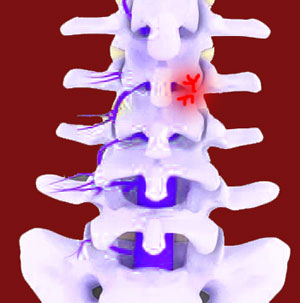
Experiencing a facet joint flare-up can become acutely painful and might interfere with normal physical functionality. What causes facet joint pain to flare-up and why do these episodes often become recurrent problems? Will repeat flare-ups of facet joint symptoms lead to chronic pain? These are all important questions to consider.
This important essay examines the occurrence of recurring facet joint pain of an episodic nature. We will explore the cause of such manifestations, the prognosis for repeated flare-ups and the best way to proceed with targeted care for a variety of diagnoses.
Facet Joint Flare-Up Symptomology
True facet joint pain tends to come and go in its early stages. Pain often begins gradually, during specific ranges of motion and then ameliorates. Other patients experience an acute episode of intense pain right from the beginning on their facet joint suffering. Regardless, pain may or may not resolve organically. In most cases, the pain will return and will often escalate in severity each time.
When pain recurs over and over again, with no symptoms or minor symptoms in between acute episodes, this is called flare-ups. When the pain flares, the patient will suffer terribly and then the episode will pass, leaving the patient more physically capable, but often in great fear of further recurrences.
Flare-ups of a structural nature should involve basically identical symptoms in terms of affected anatomical area and symptomatic expression, even though the severity of pain may change. If symptoms move around or take on different expressions, they are unlikely to be caused by facet joint issues, even if this is what is diagnosed by a healthcare provider. Remember that many cases of facet joint syndrome are misdiagnosed.
Spinal Joint Pain Flare-Up
Facet pain that is a result of structural changes in the joint tends to worsen with time. The majority of patients who experience recurrent flare-ups will eventually wind up with chronic pain in the area, due to continuing pathology and cumulative nerve irritation. This rule applies to about 85% of diagnosed patients. However, the remaining 15% of affected people might experience an organic resolution of pain eventually, although this may take a long time. Organic resolution of pain usually indicates that a problematic bone spur has been worn down through repetitive motion, ameliorating the pathology and healing the pain.
For patients who require treatment, results are generally good as long as the diagnosis is sound. When there is a verified mechanism of symptomology in place and symptoms correlate to the diagnosis, facet joint treatment should provide complete and lasting relief. Of course, facet deterioration continues and might come back elsewhere in the spine over time, but many cases are permanently cured using minimally invasive surgical interventions.
Patients who do not respond well to appropriate treatment are often misdiagnosed and will typically not find relief. These who do experience breaks in pain will typically suffer worse recurrences soon after or might suffer substitute symptoms elsewhere in the body. This is a very common sign of psychogenic manifestation, such as in the case of Dr. Sarno’s famous diagnosis, tension myositis syndrome.
Treatment for Facet Joint Flare-Up
First aid for acute facet joint pain can be provided at home. In virtually all cases, pain is elicited by specific ranges of motion. Patients can usually relieve the majority of pain by simply moving less and being careful with the types of movement they perform while pain is severe. Various conservative remedies might help to relieve some degree of pain:
Ice and heat can be therapeutic and have basically no risk factors to consider. Similarly, massage and chiropractic might help to encourage healing and relieve soft tissue stress around the joint. If any of these modalities of care provides relief, patients should use them, as needed, as they are safe and holistic.
OTC or prescription drugs can be used when needed. Just remember that these substances are toxic and will degrade your general health with each use. If you must use these drugs over long timelines, you will almost surely suffer systemic health issues that might lead to serious complications.
Facet joint nerve block injections can be provided for severe flare-ups. While these might provide adequate relief for a time, they are nothing more than a dangerous temporary fix, so patients should not rely on them for repeat episodes whenever possible.
Minimally invasive surgery can solve most minor facet joint issues permanently. Although many patients cite poor treatment results from surgery, this occurrence is most often due to misdiagnosis, rather than an unsuccessful procedure or postoperative complications. If your facet joint pain has already resisted appropriate treatment, consider getting a second opinion before even considering surgical intervention.
Facet Joint Pain& > Facet Joint Symptoms > Facet Joint Flare Up





